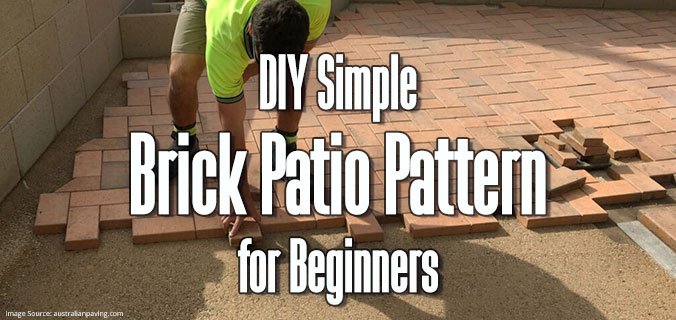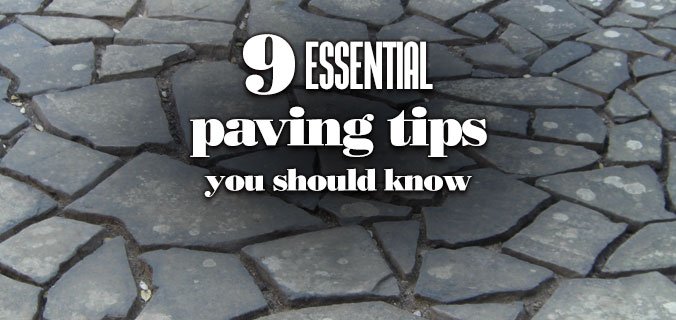This article will help you to know more about the types and shapes of your patios to enhance the look and feel of your home. The patio comes from the Spanish term patio, which literally translates as backyard or back garden. Traditionally, a patio is the enclosed inner court of a Spanish or Spanish-style home. In popular usage, a patio is any outdoor living space that may be used for eating, entertainment, or relaxation close to home. Patios do not always have covers or roofs, and they have typically paved spaces between the home and garden. Concrete, brick, stone, flagstone, gravel, pavers, and pebbles are just a few of the materials used to build them. A patio can be built to attach to a house or stand-alone. A walled patio is sometimes called a courtyard or a courtyard patio. A Patio as an Extension of a Home or Room A patio…
DIY Simple Brick Patio Pattern for Beginners
Patio bricks may be laid in a variety of designs. The pattern is merely for aesthetic purposes and will have the same effect on the brick surface regardless. For novices, it is advisable to utilize a basic design that doesn’t need much cutting of bricks. The basketweave, which is both attractive and noticeable yet easy to set up, would be an excellent option. If you want to construct a square or rectangular patio based on the bricks you have available, you won’t have to cut any of them. The ideal bricks for this project are paving bricks or brick pavers, which are about 2 inches thick and have smooth, solid faces. These are designed to provide a pleasant walking surface with a smooth, solid face thickness of about 2 inches. To create a checkerboard pattern in a basket weave design, you must have the widths of two bricks equal the…
How to Install Paver Edging
A rigid plastic building material called paver edging creates boundaries for patios or walkways constructed of sand-set bricks or concrete pavers. After the compactible gravel base is laid, the paver edging is placed to form a barrier that keeps the sand layer in place and makes it easier to install. It also adds to the lifespan of the patio or walkway by keeping the sand base from washing away over time. Paver edging, which is constructed of recycled vinyl or another hard plastic, is similar to the flexible garden edging used to define lawns and planting zones but is a heavier-duty, contractor-grade product. Paver edging comes in rigid 6-foot lengths held in place with nylon-coated spikes driven through the edging and into the earth, rather than being handed out in long rolls. If curves are required, connecting tabs on the edge can be removed to bend into gentle arcs. The…
Stunning Options for Driveway Pavers
The most common driveway pavers surfaces are Asphalt and Concrete. Both are long-lasting, low-cost materials with a relatively long lifespan when appropriately maintained. The average cost of an asphalt driveway is about $3 to $5 per square foot, and it can last 12 to 20 years with care. Installing a concrete driveway costs between $6 and $10 per square foot nationally, and it may endure 40 years or more with proper upkeep. However, both of these materials are a bit drab. If you have enough of the same old driveway treatments, it’s time to consider utilizing driveway pavers on your next project. Paver driveways are usually constructed on a foundation of compacted gravel and sand. On the other hand, some people are amazed to find that there are three distinct pavers, each with advantages and disadvantages. Advantages of Pavers Pavers come in a broader range of designs, colors, and overall…
How to Install Pavers Patio in Your Backyard
Are you thinking to install a paver patio in Your Backyard? Patios are a significant element of every home. Nothing can compare to spending time in the fresh air with family and visitors or simply taking your time to read a book and drink a glass of wine alone. But you’ll need a decent-sized, properly landscaped area for all of this to happen. Chairs and tables are difficult on dirt and grass. Landscaping rock and pea gravel are low-cost and easy to set up, but they tend to scatter. Concrete slabs are time-consuming and costly to install. But there’s a price to pay: patio pavers installed in conjunction with a handy product called polymeric sand. Working With Polymeric Sand Pavers are a relatively simple project for do-it-yourselfers to undertake. But how can you keep the gaps between the pavers tidy? Weeds will overgrow in dirt or loose-fill gravel. Exterior stone…
9 Essential Paving Tips You Should Know Before You Spend Your Money on That Kit
Create a stunning, long-lasting, and distinctive outdoor patio with concrete pavers. Patio pavers are simple to set up, resistant to weather, and able to meet almost any design objective. Before you install these must-have additions to your landscape, learn about these 9 things about patio pavers. Starting from the bottom up A solid foundation is required when installing your patio pavers. A patio project requires between 8″ and 12″ of excavation, depending on the type of material used. Contact your local utilities to ensure that all electrical, cable, and plumbing lines are correctly labeled before digging. If you have a backed installation, select an Approved Contractor for your patio design and construction. Keep it Even Patio success demands that you establish a solid bedding layer. Concrete pavers should be set in a bed of concrete sand that is uniformly screened. A rough, uneven surface could detract from the appearance of…




